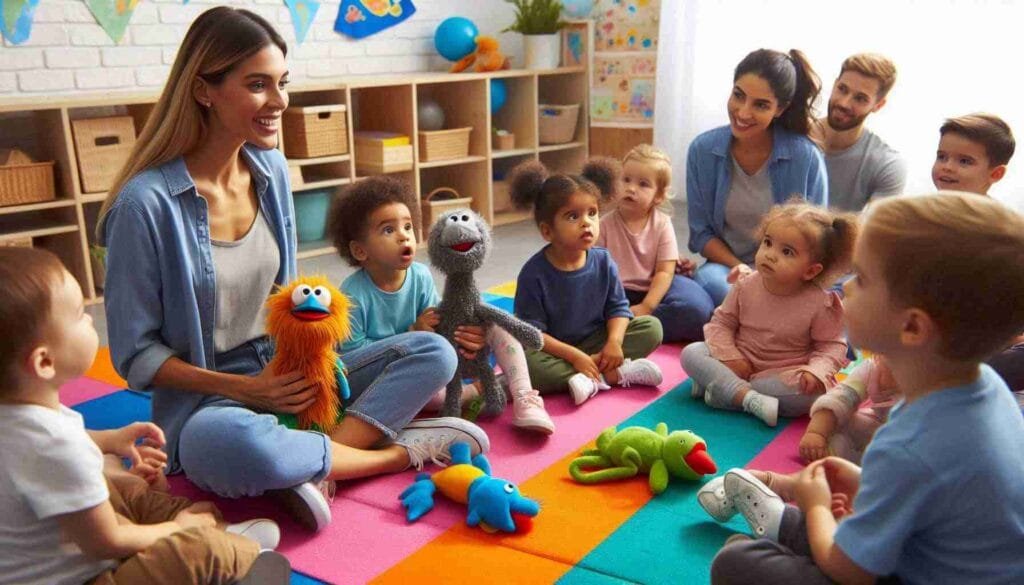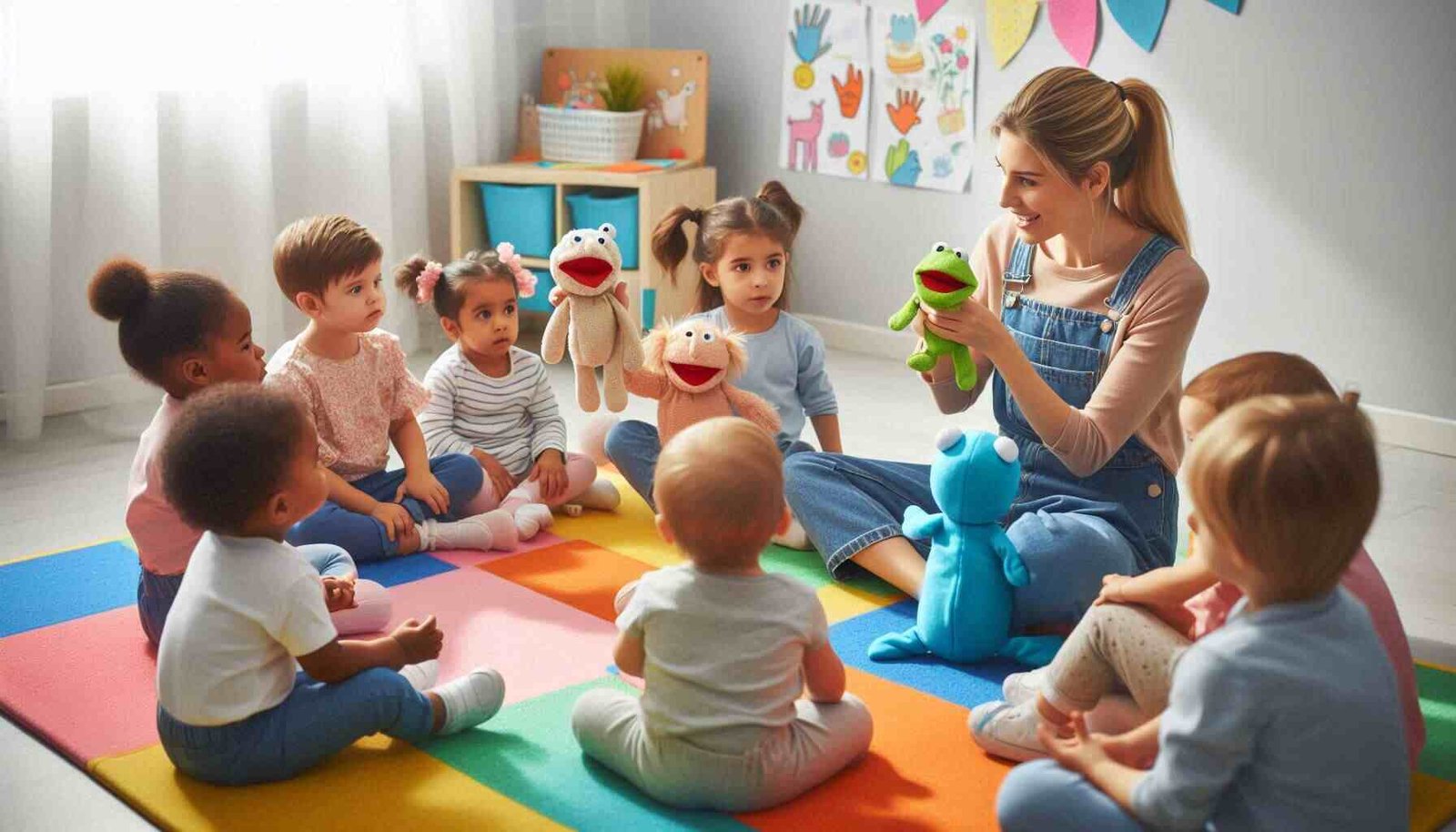Language development is a fascinating journey that starts from birth. As children grow, they move through different stages of language acquisition. These stages help us understand how kids learn to communicate and express themselves.
The 7 stages of language development provide a roadmap for how children learn to speak and understand words. From birth to about 3 months, babies start with reflexive communication like crying and cooing. By the time they reach school age, most children can speak in full sentences and engage in complex conversations.
Understanding these stages can help parents and teachers support a child’s language growth. Each stage builds on the previous one, creating a strong foundation for future learning and communication skills.
Key Takeaways
- Language development progresses through 7 distinct stages from birth to school age
- Each stage involves new skills in both understanding and using language
- Supporting language development is crucial for a child’s overall cognitive growth
Foundations of Language Acquisition
Language acquisition is a complex process that involves both cognitive development and environmental factors. These elements work together to shape how children learn and use language.
Cognitive Development and Language
Your brain plays a key role in learning language. As you grow, your cognitive abilities expand, allowing you to grasp more complex language concepts. Noam Chomsky’s theory of universal grammar suggests you’re born with an innate ability to learn language.
This built-in language capacity helps you pick up grammar rules naturally. Jean Piaget’s work shows how your cognitive stages link to language development. As you move through these stages, your language skills become more advanced.
Your brain’s plasticity in early childhood makes it easier to learn multiple languages. This is why young children often pick up new languages faster than adults.
The Role of Environment in Language Learning
Your surroundings greatly impact how you learn language. The more language you hear, the more you learn. Parents, siblings, and caregivers play a crucial part in this process.
Cultural influences shape the words and phrases you use. Different cultures emphasize different aspects of language. This affects how you communicate and express ideas.
Bilingual environments can enhance your language skills. Growing up hearing two languages may help you:
- Switch between languages easily
- Understand complex grammar concepts
- Develop stronger cognitive skills
Your language learning environment includes books, TV, and digital media. These sources expose you to a wide range of vocabulary and language patterns.
Stages of Language Development

Language development happens in stages as children grow. Each stage builds on the last, helping kids learn to talk and communicate better.
Pre-Linguistic Stage: Birth to 12 Months
Babies start learning language right away. They cry and make sounds to show what they need.
At 2-3 months, babies coo and laugh. By 6 months, they babble using sounds like “ba-ba” or “ma-ma”. This is the babbling stage.
Around 9 months, babies understand simple words like “no” and “bye-bye”. They may wave or shake their head.
By 12 months, many babies say their first words. They can also use gestures to communicate.
Early Linguistic Stage: 12 to 24 Months
This is the holophrastic stage. Kids use one word to mean a whole sentence. For example, saying “milk” might mean “I want milk”.
Your child’s vocabulary grows fast. By 18 months, they may know 50 words. By 24 months, many kids know 200-300 words.
Kids start to understand simple questions. They can follow basic commands like “give me the ball”.
Exploring Language: 2 to 3 Years
This is the two-word stage. Kids put two words together, like “more juice” or “daddy go”.
Your child’s sentences get longer. They start using simple grammar rules. For example, adding “s” to make words plural.
Kids ask lots of questions at this age. They love learning new words.
By 3 years old, most children speak in short sentences. They can have simple conversations.
Refining Language Use: 3 to 5 Years
This is the telegraphic stage. Kids use short phrases that sound like telegrams. For example, “Me want cookie” instead of “I want a cookie”.
Your child’s grammar improves. They use more complex sentences. Kids start to understand jokes and play with language.
Vocabulary keeps growing. Most 5-year-olds know about 5,000 words.
Kids learn to change their language based on who they’re talking to. This is called pragmatics.
Language for Literacy and Learning: 5 Years and Beyond
This is the multi-word stage. Kids use longer, more complex sentences.
Your child’s vocabulary keeps growing. They learn about 3,000 new words each year.
Kids start to understand abstract ideas. They can talk about things that aren’t here and now.
Reading and writing skills develop. These help boost language skills even more.
Children learn more complex grammar rules. They can use different verb tenses correctly.
Language becomes a tool for learning in school and socializing with friends.
Language Skills and Components
Language skills involve several key areas that children develop as they learn to communicate. These include building vocabulary, mastering grammar rules, and using language appropriately in social situations.
Building Vocabulary and Concepts
When you learn a language, you start by picking up new words and ideas. Your vocabulary grows quickly in the early years. You learn names for objects, people, and actions around you.
As you get older, you start to grasp more complex concepts. You begin to understand abstract ideas that aren’t just physical things you can see or touch.
Your brain makes connections between words and their meanings. This helps you learn even more words and ideas faster.
Developing Grammar and Syntax
Grammar and syntax are the rules for putting words together to make sense. You learn these rules naturally as you hear and use language.
You start with simple sentences like “I want milk.” Then you move on to more complex sentences with multiple parts.
You figure out how to:
- Use verbs correctly
- Make plurals
- Ask questions
- Use pronouns like “he” and “she”
These skills help you express your thoughts more clearly and understand others better.
The Growth of Pragmatic Skills
Pragmatic skills are about using language in social situations. You learn how to:
- Take turns in conversations
- Stay on topic
- Use facial expressions and tone of voice
- Understand jokes and sarcasm
These skills help you communicate effectively in different settings. You learn what to say and how to say it based on who you’re talking to.
As you grow, you get better at reading social cues. This helps you adjust your language to fit different situations.
Challenges in Language Development
Kids face some bumps on the road to learning language. Errors are normal and can be fixed. Some children learn two languages at once, which brings its own set of hurdles.
Addressing Language Errors
Young kids often make mistakes when learning to talk. Overextension is when they use a word too broadly. A child might call all animals “doggy.” Underextension is the opposite – using a word too narrowly. A child may only use “car” for their toy car, not real cars.
You can help fix these errors:
- Gently correct mistakes
- Use the right word in your reply
- Read books together
- Talk a lot with your child
Don’t worry too much. Most kids outgrow these errors as they learn more words.
Language Development in Bilingual Children
Learning two languages at once is a big task for little brains. Bilingual kids may seem to talk later than others. Don’t panic – this is normal. They’re working on two language systems at the same time.
You can support bilingual development:
- Speak both languages at home
- Read books in both languages
- Join groups with other bilingual families
- Be patient – mixing languages is okay at first
Bilingual kids often catch up by school age. They gain the bonus of knowing two languages, which can help them later in life.
Impact of Language Mastery on Overall Development
Language mastery shapes a child’s cognitive abilities and social interactions. It lays the groundwork for academic success and self-expression.
Fostering Literacy Skills
Language mastery directly affects literacy skills. As you develop your language abilities, you improve your reading and writing.
Strong language skills help you decode words more easily. This leads to better reading fluency. You’ll understand texts faster and more deeply.
Writing also improves with language mastery. You can express your ideas more clearly on paper. Your vocabulary grows, allowing for more precise communication.
Language mastery boosts your ability to understand complex texts. This skill is crucial for success in school and beyond.
Language’s Role in Cognitive and Social Growth
Your language skills play a big part in your cognitive development. As you learn to use words, you also learn to think more abstractly.
Language helps you solve problems. You can plan, reason, and think critically using words. This boosts your overall cognitive abilities.
Socially, language is key. It lets you express your needs and feelings. You can form relationships and work with others more easily.
Good language skills build your self-confidence. You feel more sure of yourself when you can communicate well. This confidence can help in many areas of your life.
Language mastery also helps you understand others better. This improves your empathy and social skills. You can navigate social situations more smoothly.
Frequently Asked Questions
Language development follows a typical pattern, though individual progress may vary. Children move through distinct stages as they learn to communicate, from basic sounds to complex sentences.
What is the typical progression in the stages of language learning?
Language learning starts with simple sounds and grows more complex over time. Babies begin with cooing and babbling. They then move to single words, two-word phrases, and simple sentences. Later, children use more complex grammar and expand their vocabulary.
Can you outline the stages of language development in children?
The seven stages of language development in children are:
- Pre-linguistic stage (0-6 months)
- Babbling stage (6-12 months)
- Holophrastic stage (12-18 months)
- Two-word stage (18-24 months)
- Telegraphic stage (24-30 months)
- Multiple word stage (30-48 months)
- Complex sentence stage (4-5 years and beyond)
What is the difference between 4, 5, and 6 stages of language development models?
The main difference is the level of detail. Four-stage models often combine some stages. Five-stage models may separate early and late babbling. Six-stage models might add a stage for more advanced language use.
What aspects are covered under the stages of language development?
The stages cover various aspects of language skills. These include:
- Sound production
- Vocabulary growth
- Grammar use
- Sentence structure
- Conversation skills
Each stage builds on the previous one, adding new abilities.
How does language development progress in early childhood?
In early childhood, language develops rapidly. Babies start with cooing and babbling. They then move to single words around age one. By age two, most children use two-word phrases. Between ages 3-5, sentences become longer and more complex.
In what ways can the stages of language development impact language teaching methodologies?
Understanding language stages helps teachers plan lessons. They can:
- Match activities to a child’s current stage
- Provide the right level of challenge
- Use age-appropriate materials
- Set realistic goals for language learning
Teachers can also spot potential delays and offer extra support when needed.





